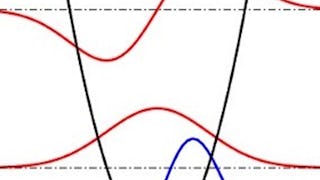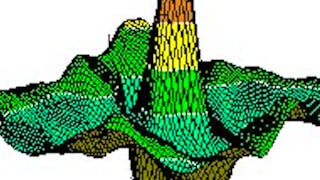Course 2 of Statistical Thermodynamics presents an introduction to quantum mechanics at a level appropriate for those with mechanical or aerospace engineering backgrounds. Using a postulatory approach that describes the steps to follow, the Schrodinger wave equation is derived and simple solutions obtained that illustrate atomic and molecular structural behavior. More realistic behavior is also explored along with modern quantum chemistry numerical solution methods for solving the wave equation.

Enjoy unlimited growth with a year of Coursera Plus for $199 (regularly $399). Save now.

Quantum Mechanics
This course is part of Statistical Thermodynamics Specialization

Instructor: John W. Daily
24,781 already enrolled
Included with
(744 reviews)
What you'll learn
Describe the relationship between the Schrödinger wave equation and atomic/molecular structural behavior
Demonstrate an understanding of modern quantum chemistry numerical solution methods for solving the wave equation
Analyze the role of quantum mechanics in explaining atomic and molecular structural behavior
Skills you'll gain
Details to know

Add to your LinkedIn profile
1 assignment
See how employees at top companies are mastering in-demand skills

Build your subject-matter expertise
- Learn new concepts from industry experts
- Gain a foundational understanding of a subject or tool
- Develop job-relevant skills with hands-on projects
- Earn a shareable career certificate

There are 3 modules in this course
Module 1presents an introduction to quantum mechanics at a level appropriate for those with mechanical or aerospace engineering backgrounds. Using a postulatory approach that describes the steps to follow, the Schrodinger wave equation is derived and it is showen that the time dependence can be separated and a stationary wave equation results.
What's included
4 videos4 readings1 assignment1 discussion prompt
In module 2 we solve the stationary wave equation for several simple systems. These include the particle in a box, the rigid rotator, the harmonic oscillator, and the hydrogenic atom. These simple solutions form the basisi for discussing real atomic and molecular behavior in the next module.
What's included
4 videos4 readings1 discussion prompt
In Module 3 we explore the more realistic behavior of atoms and molecules. We also introduce and discuss numerical methods for solving the wave equation.
What's included
6 videos6 readings2 discussion prompts
Earn a career certificate
Add this credential to your LinkedIn profile, resume, or CV. Share it on social media and in your performance review.
Instructor

Offered by
Explore more from Mechanical Engineering
 Status: Preview
Status: PreviewThe Hong Kong University of Science and Technology
 Status: Free Trial
Status: Free TrialUniversity of Colorado Boulder
 Status: Free Trial
Status: Free TrialUniversity of Colorado Boulder
 Status: Free Trial
Status: Free TrialUniversity of Colorado Boulder
Why people choose Coursera for their career




Learner reviews
744 reviews
- 5 stars
70.16%
- 4 stars
20.69%
- 3 stars
4.83%
- 2 stars
1.20%
- 1 star
3.09%
Showing 3 of 744
Reviewed on Jul 23, 2020
Best instructor and wonderful teaching style and I love quantum.
Reviewed on Jul 28, 2020
Amazing tutorial and presentations. Got a lot of information and enriched my knowledge in quantum mechanics.My sincere gratitude to Mr. John W. Daily for guiding me through this course.
Reviewed on Mar 30, 2021
It is very helpful for students to understand concepts clearly

Open new doors with Coursera Plus
Unlimited access to 10,000+ world-class courses, hands-on projects, and job-ready certificate programs - all included in your subscription
Advance your career with an online degree
Earn a degree from world-class universities - 100% online
Join over 3,400 global companies that choose Coursera for Business
Upskill your employees to excel in the digital economy
Frequently asked questions
To access the course materials, assignments and to earn a Certificate, you will need to purchase the Certificate experience when you enroll in a course. You can try a Free Trial instead, or apply for Financial Aid. The course may offer 'Full Course, No Certificate' instead. This option lets you see all course materials, submit required assessments, and get a final grade. This also means that you will not be able to purchase a Certificate experience.
When you enroll in the course, you get access to all of the courses in the Specialization, and you earn a certificate when you complete the work. Your electronic Certificate will be added to your Accomplishments page - from there, you can print your Certificate or add it to your LinkedIn profile.
Yes. In select learning programs, you can apply for financial aid or a scholarship if you can’t afford the enrollment fee. If fin aid or scholarship is available for your learning program selection, you’ll find a link to apply on the description page.
More questions
Financial aid available,

